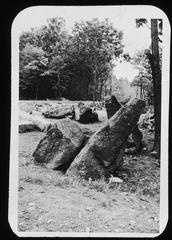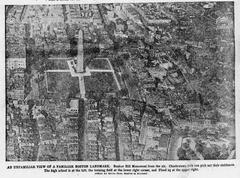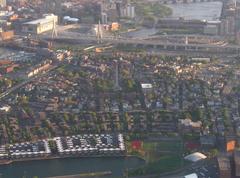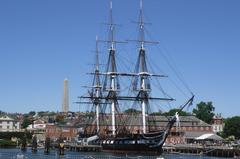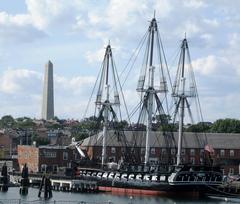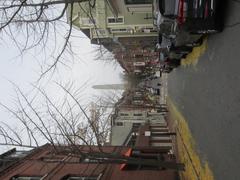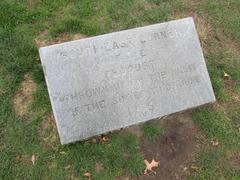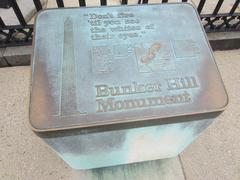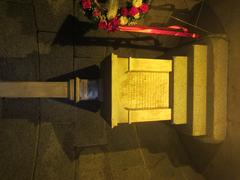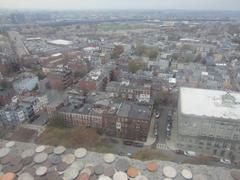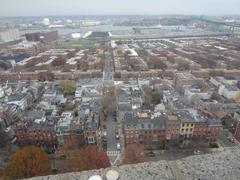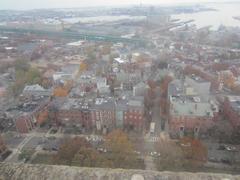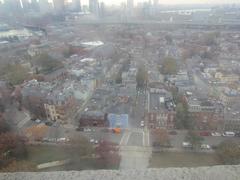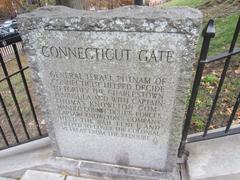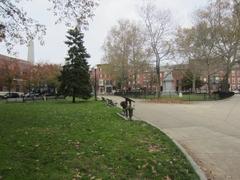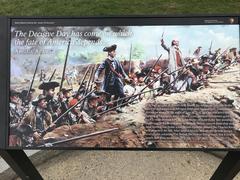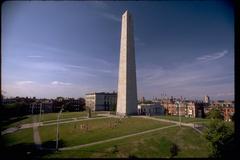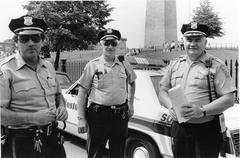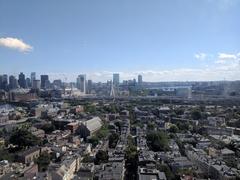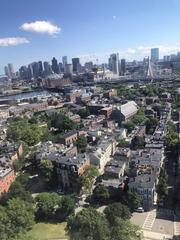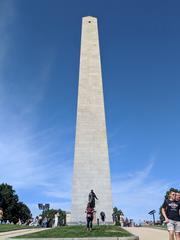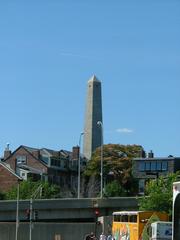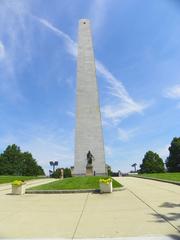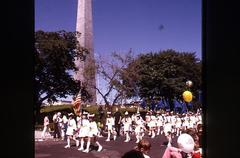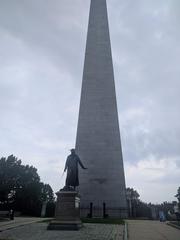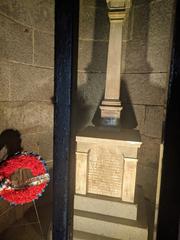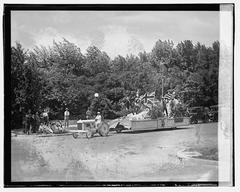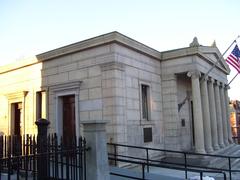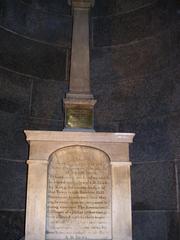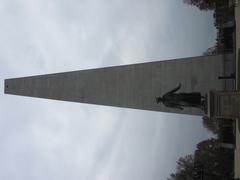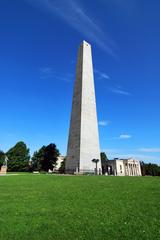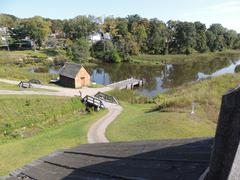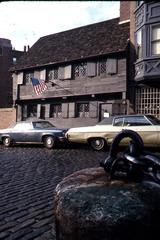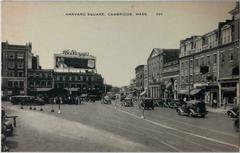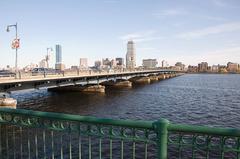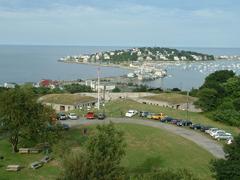
Bunker Hill Monument Visiting Hours, Tickets, and Historical Significance in Boston
Date: 18/07/2024
Introduction
The Bunker Hill Monument stands as a formidable symbol of American patriotism and resilience, commemorating the Battle of Bunker Hill, one of the early and significant conflicts of the American Revolutionary War. Located in Charlestown, Boston, this granite obelisk measures 221 feet in height and offers visitors a panoramic view of the city from its observation deck. The Battle of Bunker Hill, fought on June 17, 1775, was a pivotal moment in American history, showcasing the determination and strength of the colonial forces against the British Army despite the latter’s ultimate victory (National Park Service).
The idea to erect a monument to honor the participants of this historic battle began in the early 19th century. The Bunker Hill Monument Association, formed in 1823, played a crucial role in overseeing the project. Solomon Willard, an architect and stone carver, was selected to design the monument, which was completed in 1843 after overcoming significant financial challenges. The monument’s construction, marked by the use of quarried granite from Quincy, Massachusetts, and inspired by ancient Egyptian obelisks, symbolizes endurance and strength (Massachusetts Historical Society).
Today, the Bunker Hill Monument is not only a tribute to the past but also a vibrant educational resource. It is part of the Boston National Historical Park and the Freedom Trail, making it a key destination for tourists and history enthusiasts alike. This comprehensive guide aims to provide detailed information on the monument’s history, visiting hours, ticket prices, travel tips, and nearby attractions to help you plan your visit effectively.
Table of Contents
- [Introduction](#introductionintroduction)
- [History of Bunker Hill Monument](#history-of-bunker-hill-monumenthistory-of-bunker-hill-monument)
- [The Battle of Bunker Hill](#the-battle-of-bunker-hillthe-battle-of-bunker-hill)
- [Planning and Construction](#planning-and-constructionplanning-and-construction)
- [Funding Challenges](#funding-challengesfunding-challenges)
- [Design and Architecture](#design-and-architecturedesign-and-architecture)
- [Dedication and Public Reception](#dedication-and-public-receptiondedication-and-public-reception)
- [Preservation and Restoration](#preservation-and-restorationpreservation-and-restoration)
- [Visitor Information](#visitor-informationvisitor-information)
- [Visiting Hours](#visiting-hoursvisiting-hours)
- [Ticket Prices](#ticket-pricesticket-prices)
- [Travel Tips](#travel-tipstravel-tips)
- [Nearby Attractions](#nearby-attractionsnearby-attractions)
- [Boston National Historical Park](#boston-national-historical-parkboston-national-historical-park)
- [Charlestown Navy Yard](#charlestown-navy-yardcharlestown-navy-yard)
- [Museum of Science](#museum-of-sciencemuseum-of-science)
- [Special Events and Commemorative Activities](#special-events-and-commemorative-activitiesspecial-events-and-commemorative-activities)
- [Anniversary Events](#anniversary-eventsanniversary-events)
- [Guided Tours and Educational Programs](#guided-tours-and-educational-programsguided-tours-and-educational-programs)
- [FAQ](#faqfaq)
- [Conclusion](#conclusionconclusion)
- [References](#referencesreferences)
History of Bunker Hill Monument
The Battle of Bunker Hill
The Bunker Hill Monument commemorates the Battle of Bunker Hill, which took place on June 17, 1775, primarily on Breed’s Hill. This battle was a significant conflict in the American Revolutionary War, demonstrating the resolve and strength of the colonial forces against the British Army. Despite the British winning the battle, it came at a great cost, with over 1,000 casualties compared to the colonial forces’ 450 (National Park Service).
Planning and Construction
The idea to erect a monument to honor the battle’s participants began in the early 19th century. The Bunker Hill Monument Association was formed in 1823 to oversee the project. The association selected the design of Solomon Willard, an architect and stone carver, who proposed an obelisk made of granite. The cornerstone was laid on June 17, 1825, during a ceremony attended by notable figures, including the Marquis de Lafayette, a hero of the American Revolution (Boston National Historical Park).
Funding Challenges
The construction of the monument faced significant financial challenges. Initial funds were raised through public subscriptions, but these proved insufficient. To raise additional funds, the association organized a “Ladies’ Fair” in 1840, which was one of the first large-scale fundraising events organized by women in the United States. The fair was successful, and construction resumed, with the monument being completed in 1842 (Massachusetts Historical Society).
Design and Architecture
The Bunker Hill Monument stands 221 feet tall and is made of quarried granite from Quincy, Massachusetts. The obelisk design was inspired by ancient Egyptian architecture, symbolizing strength and endurance. Inside the monument, a spiral staircase with 294 steps leads to an observation deck at the top, offering panoramic views of Boston and the surrounding area (Boston National Historical Park).
Dedication and Public Reception
The monument was officially dedicated on June 17, 1843, with a grand ceremony attended by thousands of people. Daniel Webster, a prominent American statesman and orator, delivered the keynote address, emphasizing the monument’s significance as a symbol of American patriotism and sacrifice. The dedication marked the culmination of nearly two decades of effort to honor the memory of those who fought at Bunker Hill (Massachusetts Historical Society).
Preservation and Restoration
Over the years, the Bunker Hill Monument has undergone several preservation and restoration efforts to maintain its structural integrity and historical significance. In the late 19th century, the monument was transferred to the care of the Commonwealth of Massachusetts, and later, in 1976, it became part of the Boston National Historical Park, managed by the National Park Service. Recent restoration projects have focused on cleaning and repairing the granite exterior, as well as improving visitor access and safety (National Park Service).
Visitor Information
Visiting Hours
The Bunker Hill Monument is open daily from 9:00 AM to 5:00 PM. However, hours may vary seasonally, so it is recommended to check the official website for the most current information.
Ticket Prices
Admission to the Bunker Hill Monument is free. However, tickets are required for climbing the monument, which can be obtained at the Bunker Hill Lodge on a first-come, first-served basis.
Travel Tips
- Parking: Limited parking is available near the monument. Public transportation is recommended.
- Footwear: Wear comfortable shoes suitable for climbing the 294 steps to the observation deck.
- Weather: Check the weather forecast as the monument may close during inclement weather.
- Accessibility: The monument itself is not wheelchair accessible, but the museum and surrounding park areas are.
Nearby Attractions
Boston National Historical Park
Explore other historical sites within the Boston National Historical Park, such as the Freedom Trail, the USS Constitution Museum, and the Old North Church.
Charlestown Navy Yard
Visit the Charlestown Navy Yard to see the USS Constitution, the oldest commissioned warship afloat.
Museum of Science
For a broader educational experience, the Museum of Science is located nearby and offers exhibits on various scientific topics.
Special Events and Commemorative Activities
Anniversary Events
The anniversary of the Battle of Bunker Hill is commemorated annually with a series of events, including reenactments, parades, and ceremonies. These events draw visitors from across the country and serve to keep the memory of the battle and its significance alive. The Bunker Hill Day Parade, held in Charlestown, is one of the oldest and most celebrated traditions associated with the monument (Boston National Historical Park).
Guided Tours and Educational Programs
Guided tours and educational programs are available to provide deeper insights into the Battle of Bunker Hill and the monument’s history. Check the official website for more details and schedules.
FAQ
Q: What are the Bunker Hill Monument visiting hours? A: The monument is open daily from 9:00 AM to 5:00 PM. Seasonal variations may apply, so check the official website for updates.
Q: How much do Bunker Hill Monument tickets cost? A: Admission to the monument is free, but tickets are required for climbing. Tickets can be obtained at the Bunker Hill Lodge on a first-come, first-served basis.
Q: How many steps are there to the top of the Bunker Hill Monument? A: There are 294 steps to the top of the obelisk.
Q: Can I bring my pet to the Bunker Hill Monument? A: Pets are not allowed inside the monument, but they are welcome on the grounds as long as they are leashed and under control.
Conclusion
The Bunker Hill Monument stands as a lasting tribute to the bravery and sacrifice of those who fought in one of the most important battles of the American Revolutionary War. Its history, from conception to completion, reflects the dedication of countless individuals who sought to honor the past and inspire future generations. As a symbol of American resilience and patriotism, the monument continues to educate and inspire visitors from around the world. Plan your visit today and explore this iconic piece of American history (National Park Service, Boston National Historical Park).
References
- National Park Service. (n.d.). Battle of Bunker Hill. https://www.nps.gov/bost/learn/historyculture/bhm.htm
- Massachusetts Historical Society. (n.d.). The Bunker Hill Monument. https://www.masshist.org
- Boston National Historical Park. (n.d.). Bunker Hill Monument. https://www.nps.gov/bost/learn/historyculture/bhm.htm
